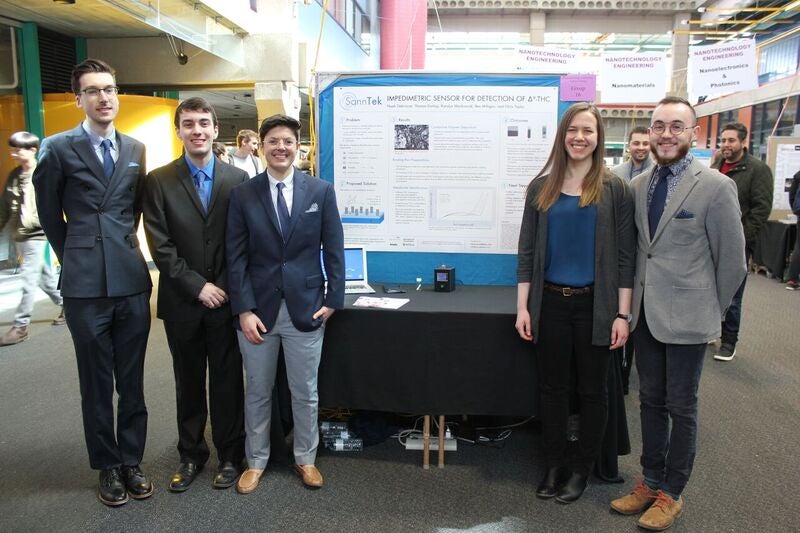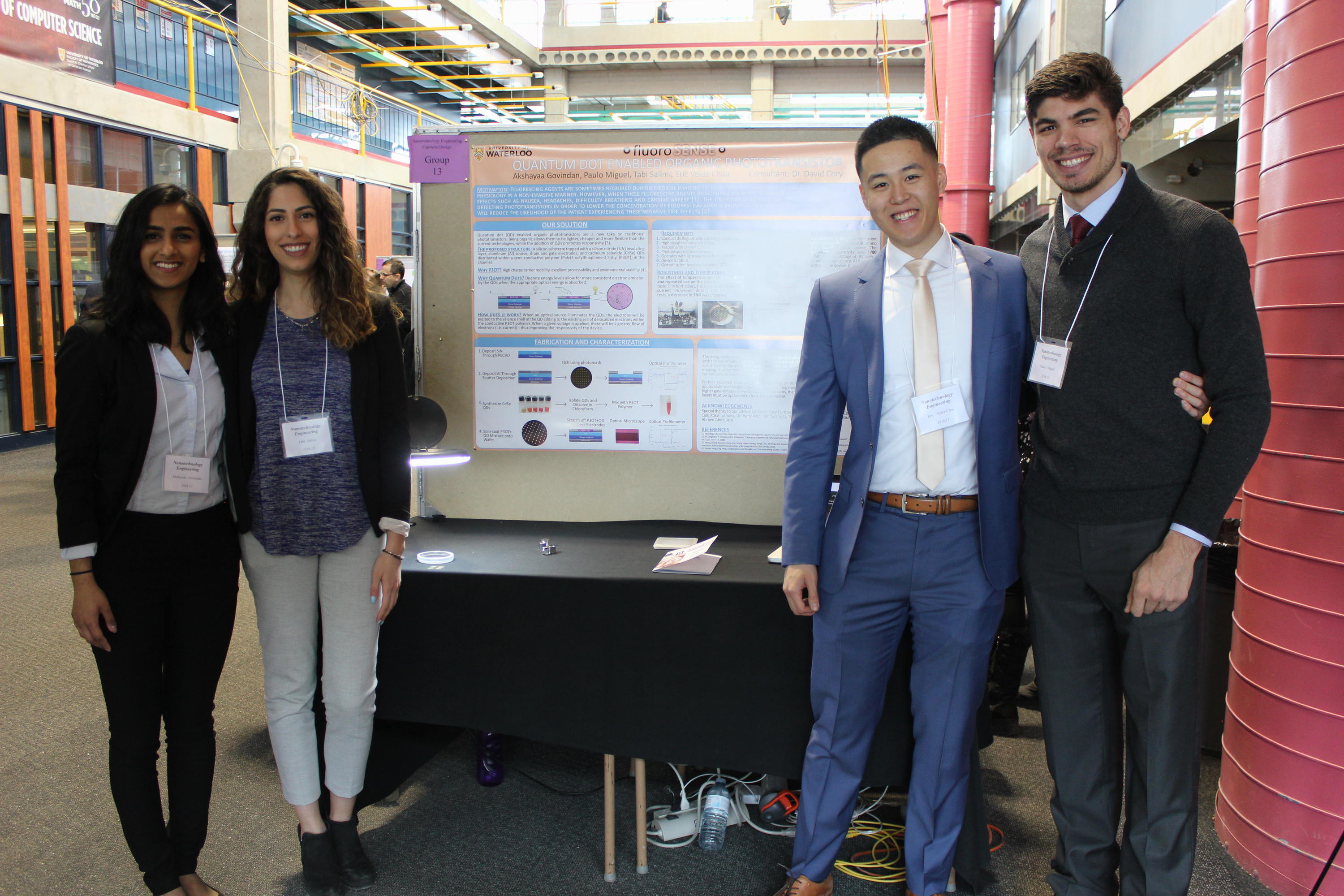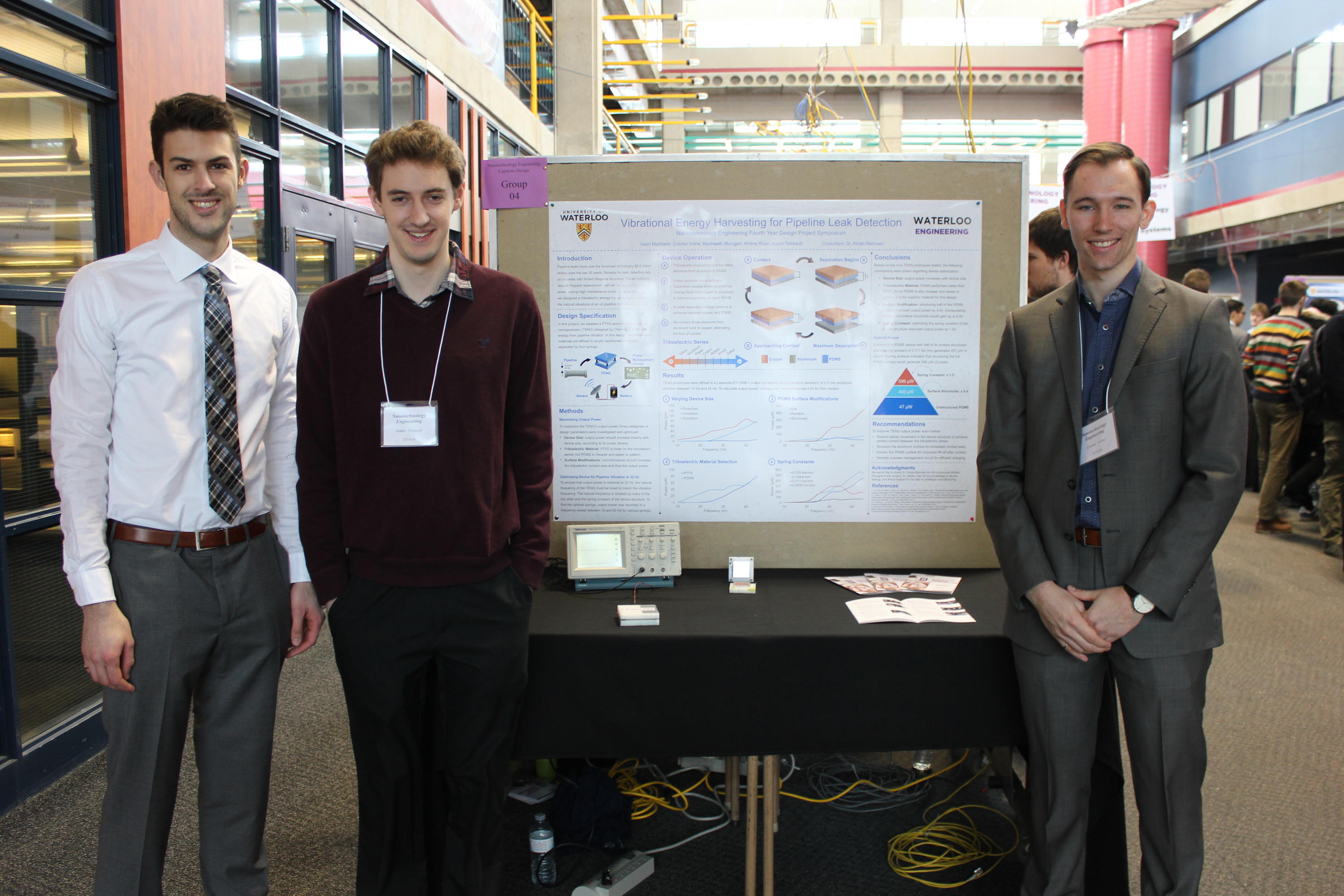At the Nanotechnology Engineering Capstone Design Symposium on March 16, 2018, a panel of judges bestowed awards on three teams of NE students for their demonstration of excellence in innovation, prototype development and potential for successful implementation, as well as their ability to communicate the technical aspects of their project. This year’s award winners are on their way towards improving the way marijuana impairment is measured, disease is detected, and pipeline leaks are identified.
The award-winners were part of a group of twenty-one teams of fourth-year NE students who, after honing their ideas together over the final year of their undergraduate degree, presented their Capstone Design projects at the Symposium. The judges considered a wide variety of innovative ideas that were categorized within three themes of study: Nanomaterials, Nanoelectronics and Photonics, and Nanotechnology and Biomedical Systems.
Congratulations to the following teams for their achievements:
First place: Group 16 - SannTek impedimetric sensor for detection of THC

(L-R): Thomas Dunlop, Chris Taylor, Noah Debrincat, Karolyn Mackowiak and Ben Milligan
The marijuana legalization trend is sweeping the globe, with several regions promising to adopt this policy in the near future. Right here in Canada, legalization is set for October 2018. A roadside device that would effectively determine if a driver is too high to drive safely, however, is lacking. SannTek is developing a portable nanotechnology-based sensor that will determine the quantitative amount of THC (the psychoactive component of marijuana) in a person’s breath. The end goal is to create a breathalyzer equivalent for marijuana detection.
Second place: Group 13 - Quantum dot enabled organic photo-transistor

(L-R): Akshayaa Govindan, Tabi Salimi, Eric Velez-Chua and Paulo Miguel
Molecular imaging uses optically detectable fluorescent biomarkers to visualize cellular functions so that disease can be detected and diagnosed. Unfortunately, these biomarkers can cause adverse side effects for the patient. This team’s photosensor, which is based on a conductive polymer and quantum dots, can improve the performance of current photosensors. By reducing the concentration of fluorescent agents required in molecular imaging, they can reduce the negative side effects experienced by the patient.
Third place: Group 4 - Vibrational energy harvesting for pipeline leak detection

(L-R): Andrej Rosic, Adam Tetreault and Connor Irvine (Kavinaath Murugan missing from photo)
Typically, sensors for pipeline leak detection are powered by batteries with limited lifespans. Frequent replacement of batteries in remote areas creates high maintenance costs for pipeline operators. To lower these costs and increase the reliability of the leak detection system, this team designed a triboelectric energy harvester that transforms the natural vibrations of an oil pipeline into electrical power. It acts as a supplementary power source that replenishes a sensor's battery to extend its lifespan, allowing pipeline operators to focus their investments on leak detection rather than battery replacement.